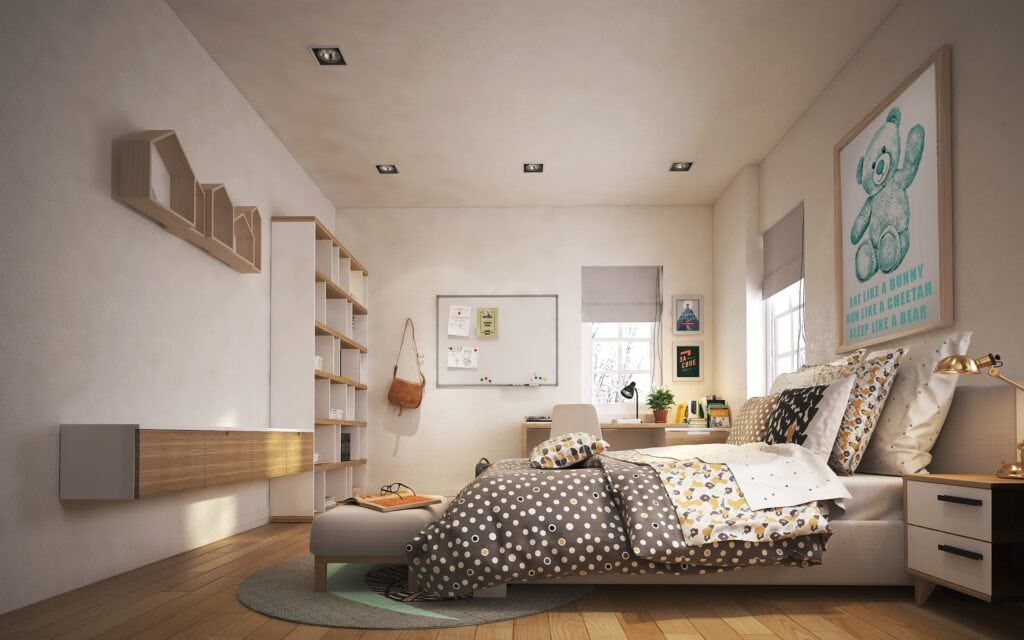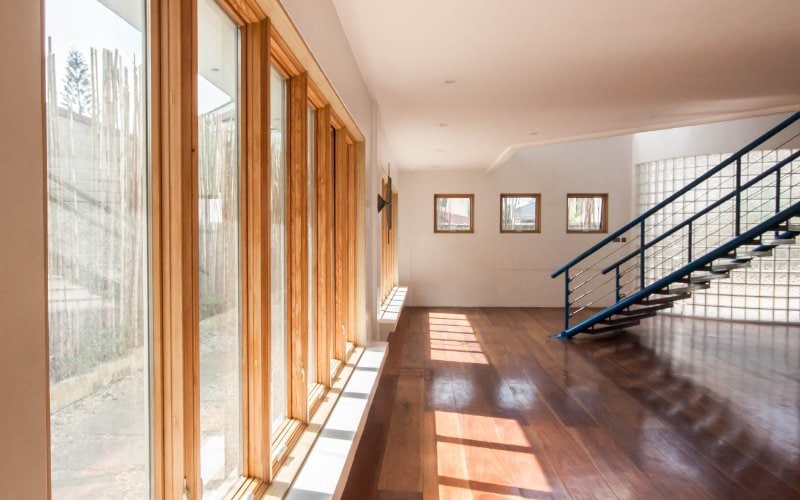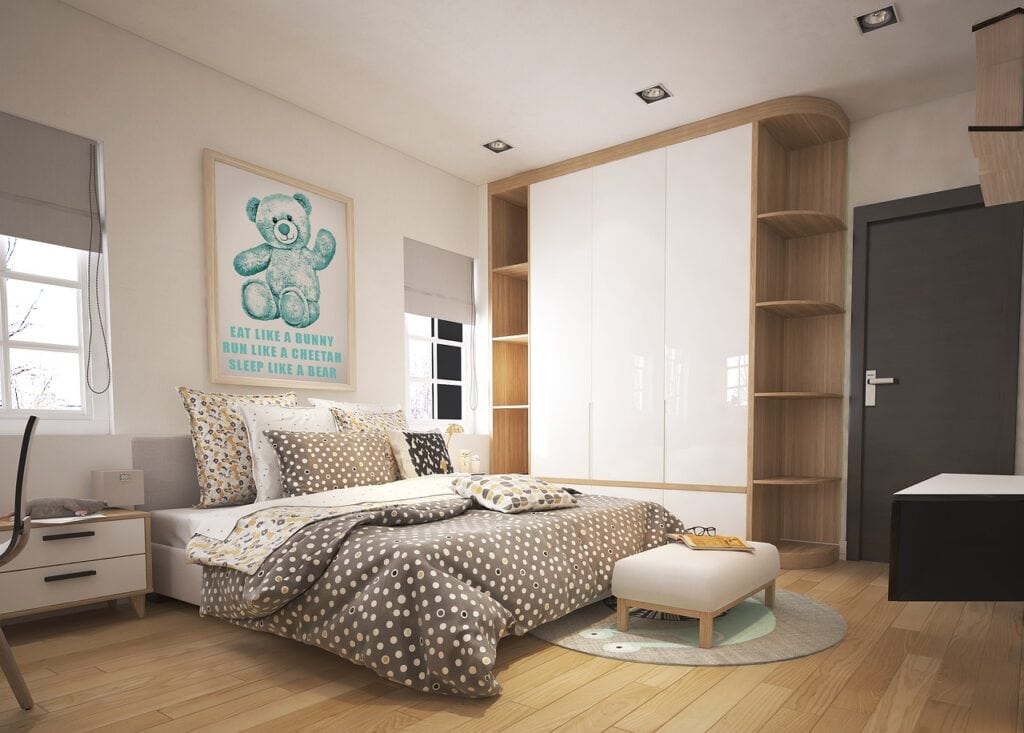What Are Face Frame Cabinets? Pros, Cons, & Types
-
Greg Iacono
- Last updated:

When it comes to kitchen cabinets, there are two things that most homeowners look for: practicality and good looks. You want practical cabinets so that using and storing all your kitchen items is a breeze, but you also want cabinets that look attractive and make your kitchen look better and more modern. Although frameless cabinets are practical enough, they aren’t exactly the most attractive choice, especially when they’re open. That’s why many people having a new home built or renovating their kitchens choose face frame cabinets.
If you’re unsure what type of cabinet you want in your kitchen or have never heard of face frame cabinets, the info below will be quite helpful and informative. It’s all about face frame cabinets, what they are, how they work, their advantages and disadvantages, and frequently asked questions about them. Read on to discover all the information you need to be a face frame cabinet expert and decide whether to install them in your home.
 How Do Face Frame Cabinets Work?
How Do Face Frame Cabinets Work?
Image Credit: PixabayFace frame cabinets don’t work differently than frameless cabinets, per se, but are different in terms of how they are constructed. Cabinets with a face frame, also known as “American style” cabinets as they were first used in the United States, have a frame on the front behind the cabinet’s door.
Think about it like this; a cabinet has three sides, a top, and a bottom. When left unframed, it looks like a box without the top flaps, and you access it through the front, which is left unadorned (i.e., plain). Thus, you can see the wooden edges of the cabinet’s sides, top, and bottom. A door is attached to the inside of one side. When you open the door, you see the wooden edges of the cabinet.
If there are drawers in the cabinet, you can also see the cabinet’s edges when you open them. It’s not particularly ugly or unattractive, but it’s rather plain. Some would call it contemporary.
With a face-framed cabinet, a frame is placed on the front edges of the cabinet (the “face”), similar to a frame around a painting. The cabinet doors are attached to this frame, and the drawers, if there are any, are placed within the structure also. When you open the door or the drawers, you see the frame, not the edges of the cabinet, which many homeowners find more appealing and attractive.
In short, face-framing is used when you want to increase the appeal of your kitchen cabinets. It creates a “classic” look seen in the United States for decades and can also increase the resale value of a home.
What Are the Different Types of Face Frame Cabinets?
There are three types or styles of face frame cabinets: a partial overlay, a full overlay, and an inset face frame. The three styles offer even more attractive looks and allow for several styles, sizes, and modifications depending on the cabinetry and its intended use in the home.
1. Partial Overlay Face Framed Cabinets
With partial overlay face framing, the frame can be seen between the doors and the drawers of the cabinets when they are closed. Of course, you also see the frame when the doors and drawers are opened, which is normal for all three types of face frames. Partial overlay face frame cabinets are the most common face frame used in hundreds of thousands of American kitchens. You should also note that some contractors refer to partial overlay face frames as “half overlay” face frames.
2. Full Overlay Face Framed Cabinets

If you choose cabinets with full overlay face framing, you won’t see much of the frame of the cabinets when the doors and drawers are closed. Some homeowners like this style more as it fits traditional and transitional kitchen styling. Full overlay face frames are the second most popular of the three face-framing techniques. Many homeowners choose them for bathrooms, walk-in closets, and bars.
3. Inset Face Frame Cabinets
Many consider inset face frame cabinets the most attractive of the three framing styles. With this style, you see the entire face frame when the doors and drawers are closed because both drawers and doors fit inside the frame. If you were to look at a series of inset face-framed cabinets, you would see a single, smooth surface, described as a “clean” look. Many high-end homes with high-end kitchens have inset face frames on all of their cabinetry. One thing to note about inset face frames is that they can expand in humid climates and cause problems when opening and closing.
Where Is Face Framing Used?
Face framing on cabinets can be used anywhere you hang cabinets in your home, at the office, or anywhere there are cabinets. For example, if you have cabinets in your laundry room, a walk-in closet, or your pantry, you can use face framing on all of them if you like. The same can be said for your bathroom, where you can install face frame cabinets just as easily as in the kitchen. The most common location for face frame cabinets is in the kitchen.
Advantages of Face Frame Cabinets
Face frame cabinets have several advantages beyond the fact that they look more attractive. Those advantages include the following:
- Increased sturdiness. The face frame makes the entire cabinet stronger.
- Cabinets stay square so that doors and drawers open and close correctly without sticking or becoming uneven.
- Face-framed cabinets allow for more styles of doors and drawers and more overall kitchen cabinet styles.
- Face framing your cabinets increases the value of your kitchen and, thus, the value of your home.
- Hanging face-framed cabinets on uneven walls or oddly shaped kitchens is easier than hanging full-access cabinets.
- Face frame cabinets cost less than “full access” cabinets with no face frames.
- There is a greater variety of materials to choose from with face frame cabinets.
Disadvantages of Face Frame Cabinets
While face-framed cabinets have plenty of advantages and are preferred by most homeowners, they do come with a handful of drawbacks, including the following:
- The face frame forms a lip that can cause an obstruction when taking items out of the cabinet. (Most people get used to it quickly and so it doesn’t cause a huge problem.)
- The drawers on a cabinet with face frames need to be narrower in order to fit inside the face frame. You will lose a small amount of storage space in each drawer.
- Many large face frame cabinets have a center stile, which is a piece of wood in the center of the cabinet for structural support and to hide the open seam between doors. This center stile can cause a slightly annoying obstruction.
 Frequently Asked Questions (FAQs)
Frequently Asked Questions (FAQs)

Does Face Framing Add Structural Support to a Cabinet?
Yes, face frame cabinets add substantial support and keep a cabinet “square” over many years. This increases the cabinet’s durability and decreases problems with doors and drawers that don’t open and close correctly. The frame does this by preventing any warping of the cabinet.
How Much More Does It Cost to Put Face Frames on All Your Kitchen Cabinets?
Actually, in a 10-foot by 10-foot kitchen, the average cost to put in face frame cabinets will be about $1,000 less than full access (aka frameless) cabinets.
Is It Easy to Adjust the Doors on Face Frame Cabinets?
Adjusting the doors is easier with face frame cabinets than with frameless cabinets.
Can You Upgrade or Renovate a Kitchen With Face Frame Cabinets?

Yes! Many homeowners upgrade to face frame cabinets when they renovate their kitchen pantry, bathroom, walk-in closets, etc.
Can Hanging and Floor Cabinets Both Have Face Frames?
Any type of cabinet, whether placed on the floor or hung on the wall, can have a face frame.
Which Type of Cabinets Are Stronger, Face Frames or Frameless?

Face frame cabinets are stronger and have fewer problems in the long run as the frame gives them extra strength.
Where Are the Hinges Placed on Face Frame Cabinets?
In face frame cabinets, the hinges are placed on the face frame rather than on the “box” of the cabinet. This gives more strength, durability, and the ability to adjust the doors if needed. It also prevents the box of the cabinet from becoming damaged.
What Makes Frameless Cabinets More Expensive Than Face Frame Cabinets?
Typically, the extra cost of frameless cabinets is due to the need to use thicker, stronger materials to build the cabinet and make up for the lack of rigidity and strength provided by the frame on a face frame cabinet.
Which Face Frame Cabinet Style Is the Most Expensive, Partial Overlay, Full Overlay, or Inset?
Inset face framing is the most expensive due to the need for high precision and specialized cabinetry hardware.
What Does the Term “Overlay” Mean?
The overlay refers to the amount of cabinet door and drawer that overlaps on the face frame of the cabinet. With a full overlay, for example, very little of the face frame is revealed when doors and drawers are closed. On the other hand, an inset overlay covers none of the face frames but instead reveals them 100%.
A Quick Reference Guide
| Face Frame Cabinets | Frameless Cabinets | |
| Strength | Strength comes from frame | Strength comes from thicker wood and other materials |
| Customization and style flexibility | More customizable | Less customizable |
| Cost | Less expensive | More expensive |
| Aesthetics | Nice look | Plainer look |
| Installation | Easier to install | More difficult to install |
| Storage Space | Slightly less storage space | Slightly more storage space |
| Obstructions | Face frame obstructs storing or retrieving items | No obstruction |
| Nicknames | Traditional, American Style | Full access, European style, contemporary |
| Open shelf option? | No | Yes |
| Drawer size | Slightly smaller | Slightly larger |
| Hinges | Mounted to frame | Mounted to cabinet box |
| Wide cabinet option? | Yes | No due to less horizontal strength. |
| Door choices | Many | Only 1 |
 Final Thoughts
Final Thoughts
While frameless cabinets are more popular today, face frame cabinets are the definite choice if you want a traditional, attractive, and stylish kitchen. By using a frame on the face of the cabinet, the wooden box of the cabinet is covered, which many believe makes face frame cabinets more appealing. Face frame cabinets also allow for much more customization than frameless cabinets, although they reduce your overall storage and drawer space, albeit slightly. Face frame cabinets are also sturdier thanks to the frame, allowing for wider cabinets that won’t warp or sag in the long run.
Featured Image Credit: Pixabay
Contents
 How Do Face Frame Cabinets Work?
How Do Face Frame Cabinets Work?
 Frequently Asked Questions (FAQs)
Frequently Asked Questions (FAQs)